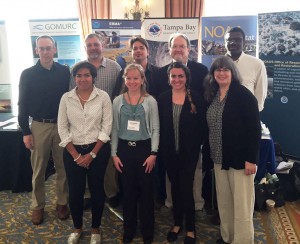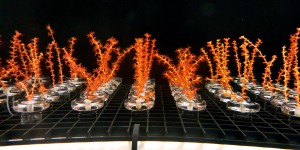NCCOS staff and scientists from CCEHBR in Charleston, SC recently attended the Gulf of Mexico Oil Spill & Ecosystem Science Conference in Tampa, Florida. The conference drew over 2,000 scientists, policymakers, students, and other stakeholders.

CCEHBR’s presentations focused on oil and dispersant effects in estuarine organisms, toxicity effects to mesophotic octocorals, and oil spill related applications of NOAA’s National Databases for Deep-Sea Corals. The National Database is a product of ongoing collaboration among NCCOS, NOAA’s Deep-Sea Coral Research and Technology Program, and others.
The chemical fate and toxicity effects of two oil dispersants and dispersed crude oil were elucidated using laboratory testing and simulated salt marsh mesocosms. Results of the study will benefit management agencies making decisions on the use of dispersants in oil spill remediation.

Another study by a College of Charleston graduate student working at CCEHBR detailed results of laboratory exposures of oil and dispersant on a mesophotic coral species located below the oil slick. The contributions of NCCOS staff generated interest by NOAA’s Office of Response and Restoration. The presentations also highlighted the value of exposure studies, the potential for mesophotic coral husbandry to support restoration, and utility of NOAA’s data portals to develop decision making tools.
For more information, contact Enrique.salgado@noaa.gov
Links:
NOAA Deep-Sea Coral Data Portal
https://deepseacoraldata.noaa.gov/
NCCOS Project Page: National Inventory of Deep-sea Corals and Sponges
http://coastalscience.noaa.gov/projects/detail?key=89
NCCOS News and Features: Effects of dispersants and Weathered Oil
http://coastalscience.noaa.gov/news/?p=15858
